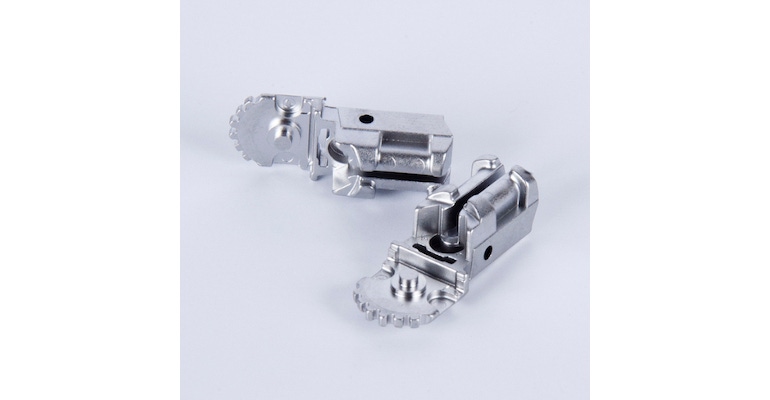MIM can be used to mold metal (stainless, carbon, tool, and low alloy steels Fe-Ni, cobalt, and tungsten alloys) as well as ceramic, according to MICRO.
March 9, 2021

Metal injection molding (MIM) offers medical device manufacturers an alternative to machining, and the process can be used for small, complex, intricate-shaped components, according to Steve Santoro, executive vice president, MICRO. The company is a full-service contract manufacturer of precision medical devices, metal injection and insert molding, sub-assemblies, and complete devices. Santoro recently delivered the keynote address at MIM2021: International Conference on Injection Molding of Metals, Ceramics and Carbides, held virtually February 23 - 25.
Santoro noted that MIM works well for the following:
Replacement of costly machined components.
Producing small, complex, intricate-shaped parts.
Integrating injection molding capability with diverse metal selection.
Achieving greater design freedom, thanks to its short development cycle and turnaround time.
Automation where high volumes and consistent quality are required.
“MIM parts have excellent strength, ductility, and corrosion resistance, and [they] can be bent, welded, hardened, and heat treated like any other wrought material,” he told MD+DI. “All of the above qualities have proven to make MIM the process of choice to make end effectors such as dissectors and graspers, and we now see this technology migrating into robotic-assisted surgery.”

Santoro shared the following factors to consider when using MIM:
Cost. “For minimally invasive surgical instruments, metal components will account for a large portion of the cost,” MICRO explained on its Web site. “Adding processing steps also increases costs.” To help medical device OEMs determine process applicability, MICRO can perform detailed cost models and provide process capability data.
Volume. MIM can be employed for medium-to-high volume medical device applications, MICRO explained on its site.
Materials. Several materials often used for medical device manufacturing can be processed via MIM such as metal (stainless, carbon, tool, and low alloy steels Fe-Ni, cobalt, and tungsten alloys) and ceramics,” Santoro explained. MICRO calls 316-series stainless-steel grade “the gold standard for MIM” given its corrosion resistance; however, “some stainless-steel grades, such as 316 and 440, cannot achieve as much strength as other grades,” the company reported.
Risk. “Commercial risk is cost driven, and extensive cost models can be used to reduce risks,” Santoro told MD+DI. “We can model a number of scenarios to find the best combination including efficiencies, labor, supervision, quality, and machine costs. Technical risk involves the understanding of mature technologies with easily built tooling that produces stable process, and this is the essence of risk reduction. Compliance risks are the known materials and processes that have gone through the testing previously.”
The MICRO team advises medical device OEMs to consult with contract manufacturers early in the process so all parties can review and agree upon project design and commercial considerations.
About the Author(s)
You May Also Like


